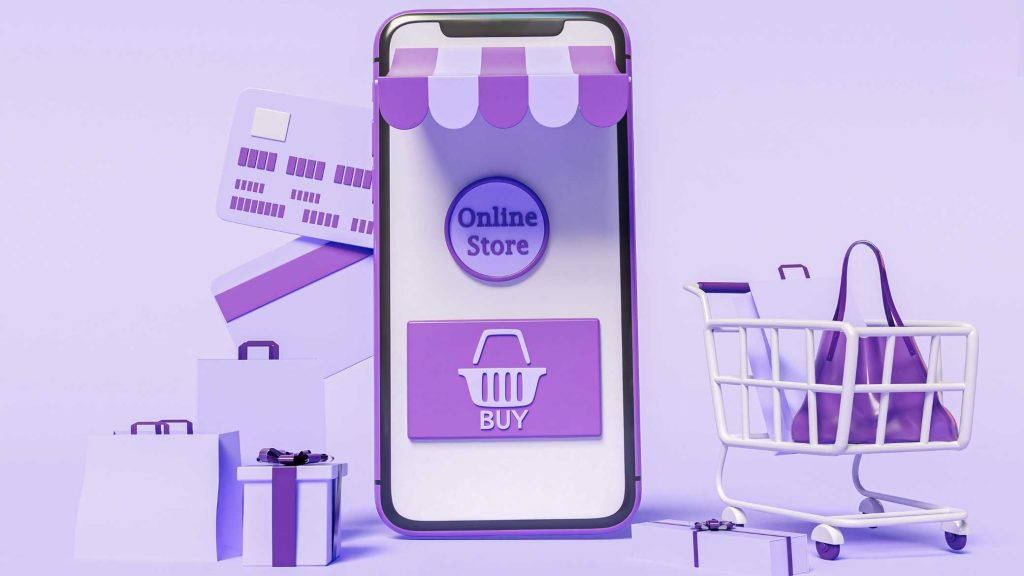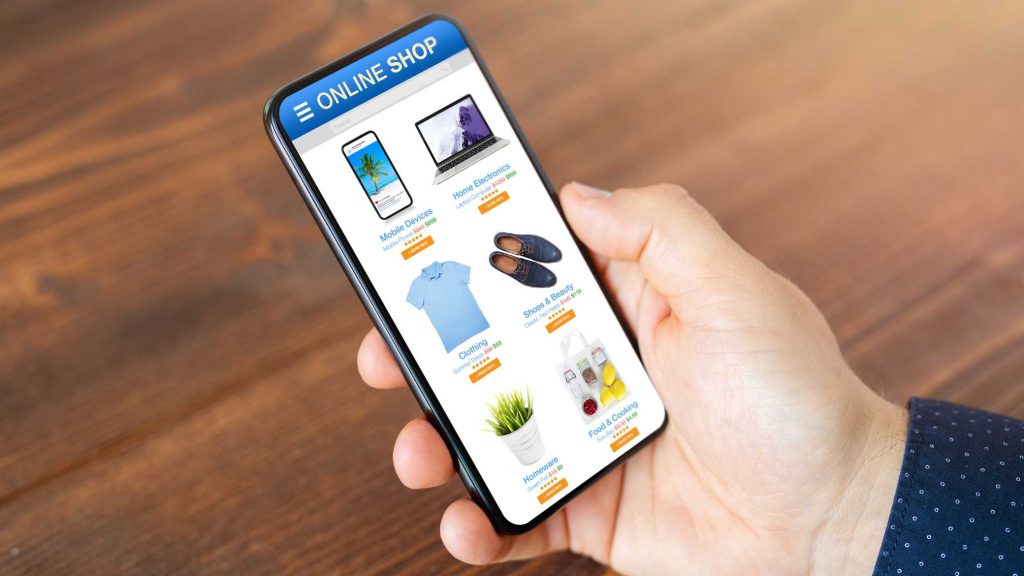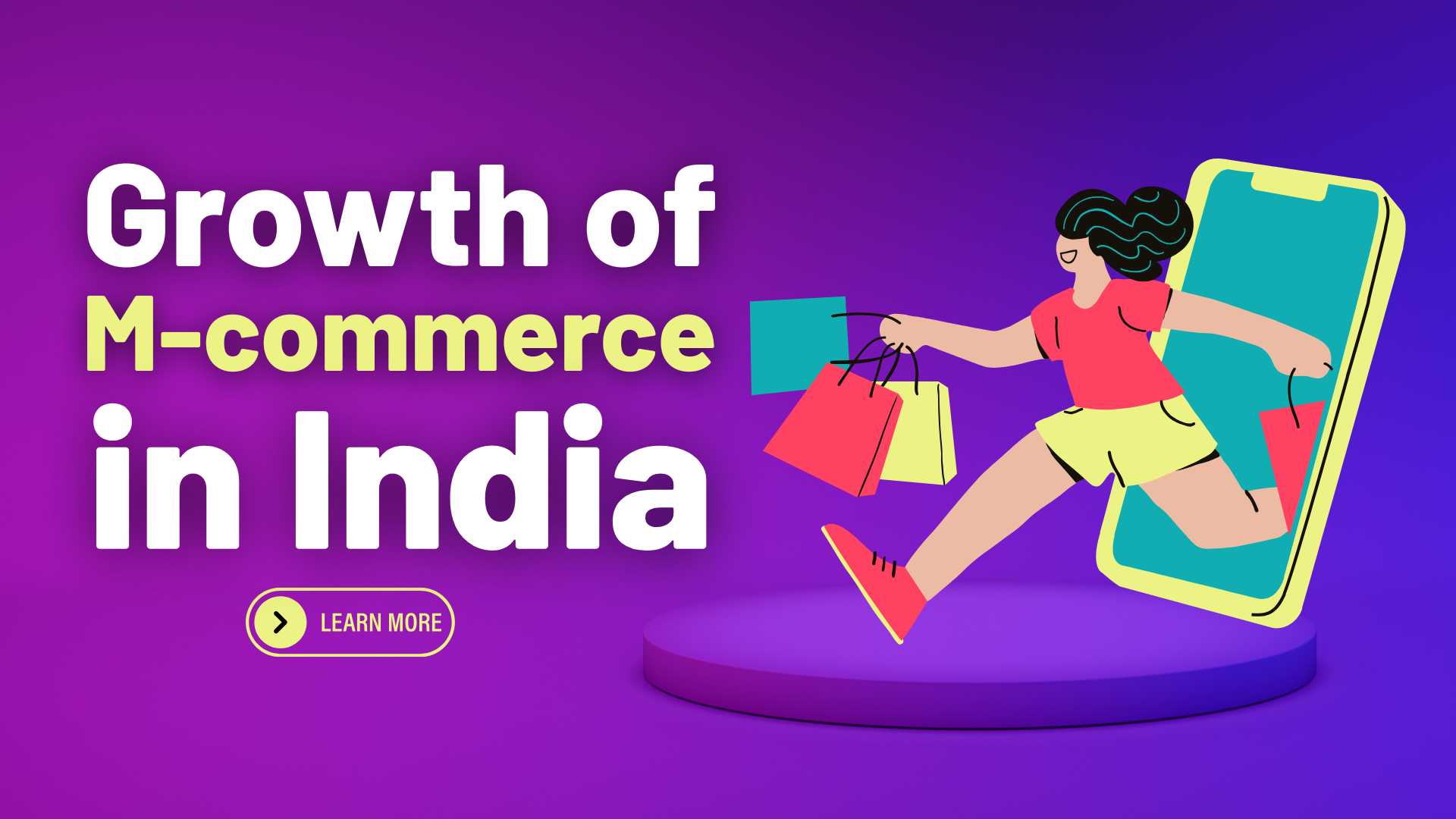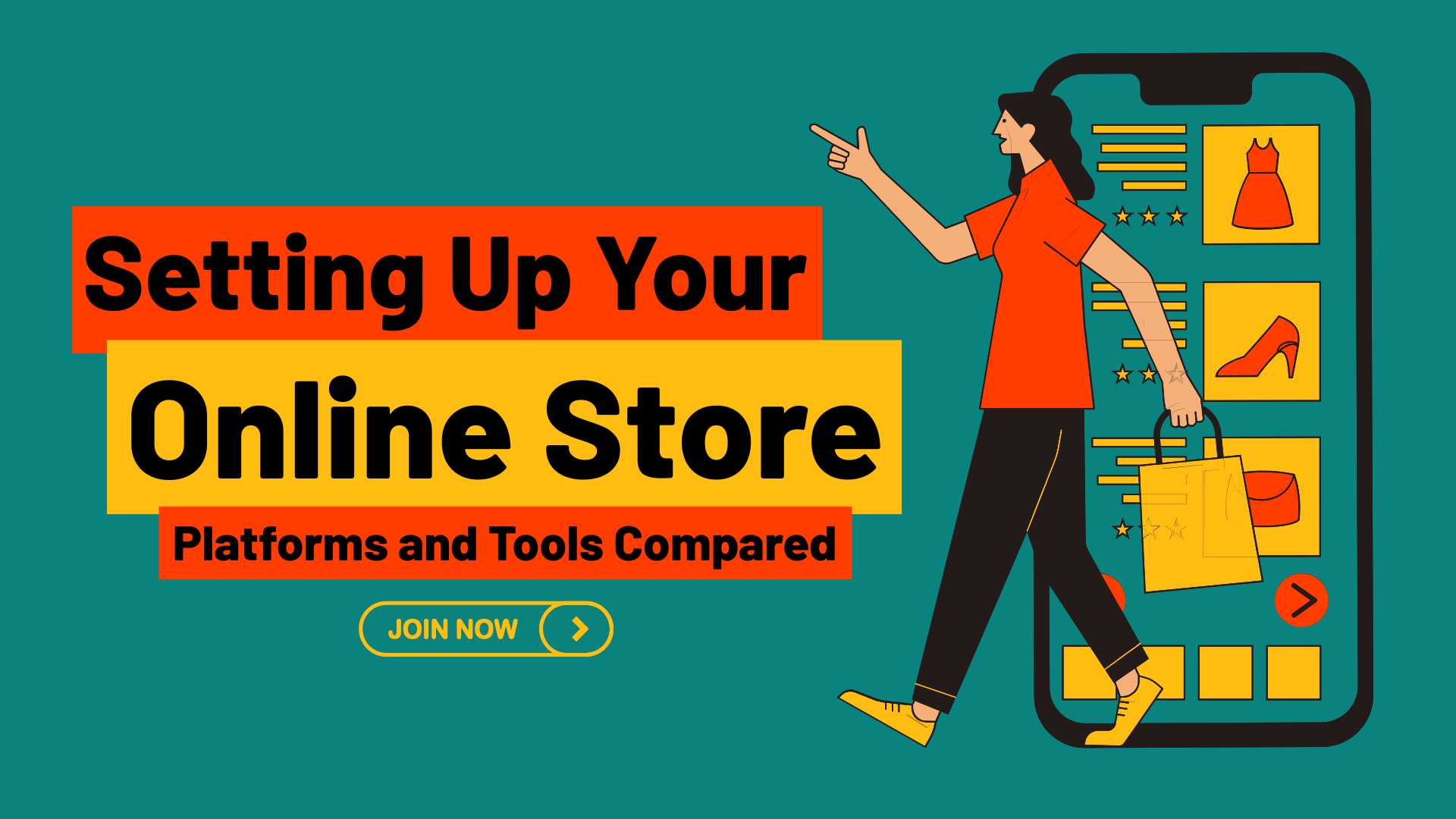Growth of Mobile Commerce : India is currently witnessing a mobile commerce revolution unlike any other. With over 1.2 billion mobile phone users and more than 800 million internet users, India is positioned as one of the largest digital consumer markets in the world. The explosive growth of smartphones, coupled with affordable mobile data plans and digital payment ecosystems, has fueled the rapid expansion of mobile commerce in India.
Table of Contents
As we step into 2025, m-commerce has become a critical driver of the Indian digital economy, transforming how businesses sell and consumers buy.
What is Mobile Commerce (M-commerce)?

Mobile commerce, commonly abbreviated as m-commerce, refers to the buying and selling of goods and services using wireless handheld devices such as smartphones and tablets. Unlike traditional e-commerce, which typically occurs on desktop computers or laptops, m-commerce provides users with the flexibility and convenience of shopping, transacting, and banking on the go.
Also Read : Best Free Ecommerce Website Builders
From online retail shopping apps to mobile banking, digital wallets, food delivery apps, and ticket booking, m-commerce encompasses a wide array of mobile-enabled services.
Why M-Commerce is Booming in India
The growth of m-commerce in India is no accident. Several key factors have contributed to its massive expansion:
1. Affordable Smartphones
India has become one of the world’s largest markets for budget smartphones. Devices priced below ₹10,000 have brought millions of new users online, creating a vast digital customer base.
2. Cheapest Mobile Internet in the World
Thanks to fierce competition between telecom giants like Reliance Jio, Airtel, and Vi, India enjoys the world’s most affordable mobile data. This has been a significant enabler of mobile internet usage across rural and urban areas.
3. UPI and Digital Payment Revolution
The rise of Unified Payments Interface (UPI) and digital wallets such as PhonePe, Google Pay, Paytm, and BHIM has simplified mobile transactions. UPI processed over 14 billion transactions in a single month in 2024, showcasing its popularity.
4. Mobile-First Consumer Behavior
India’s digital audience is predominantly mobile-first. Over 90% of digital consumers access the internet via mobile phones, making m-commerce the default choice for online shopping and payments.
5. Rise of Regional Language Internet
With platforms and apps supporting regional languages, mobile commerce has penetrated deep into Tier 2, Tier 3 cities, and rural India. Localization has been key to expanding digital access and trust.
Top Sectors Thriving Due to Mobile Commerce in India
Several sectors have seen exponential growth due to the rise of m-commerce in India. Let’s explore the most prominent ones:
1. Mobile Retail and E-commerce Apps
Apps like Flipkart, Amazon India, Meesho, and Snapdeal have transformed retail in India. With mobile-first user interfaces, AI-driven personalization, and secure payment options, shopping has never been easier.
2. Online Food Delivery
Platforms such as Swiggy, Zomato, and Blinkit have revolutionized how India eats. From quick commerce to hyperlocal delivery, mobile food ordering is a booming m-commerce vertical.
3. Mobile Banking and Fintech
Banks and fintech firms like Paytm Payments Bank, Cred, Groww, and PhonePe offer full banking services via mobile apps. From checking balances to investing in mutual funds, everything is just a tap away.
4. Online Ticketing and Travel
Booking movie tickets, train travel (via IRCTC), flights, and buses through mobile apps has become mainstream. MakeMyTrip, Goibibo, Redbus, and others dominate this segment.
5. Education and Edtech
Apps like BYJU’S, Unacademy, and Vedantu have made education accessible on mobile, especially in rural regions. M-commerce enables users to pay for and access high-quality digital education anytime.
6. Grocery and Daily Essentials
With the success of platforms like BigBasket, Zepto, JioMart, and Amazon Pantry, mobile commerce now meets daily household needs. The convenience of mobile grocery ordering is changing consumer habits rapidly.
Key Players Driving M-Commerce in India
Several startups, unicorns, and established players are actively contributing to India’s m-commerce boom. Here are some of the most influential names:
- Amazon India – Pioneer in mobile shopping and quick commerce
- Flipkart – One of the first to introduce mobile-only app sales
- Reliance Jio – Empowered millions with cheap internet and JioMart
- PhonePe, Paytm, Google Pay – Leading the digital payments revolution
- Meesho – Tapping into mobile-based social commerce
- Swiggy, Zomato – Redefining food delivery via mobile
- Cred – High-end fintech credit platform built for mobile users
- Udaan – B2B m-commerce for small and medium enterprises
How M-Commerce Works: Behind the Scenes
Understanding how mobile commerce works can provide insight into its scale and complexity. Here’s a breakdown:
User Side
- User downloads an m-commerce app or visits a mobile site
- Browses products or services via intuitive UI
- Adds items to cart and proceeds to checkout
- Selects payment option (UPI, wallet, credit card)
- Receives order confirmation and tracking via SMS/app
Business Side
- Businesses list products/services and manage inventory
- Integrated payment gateways handle transactions securely
- Mobile push notifications ensure real-time communication
- AI-driven analytics personalize the experience
- Logistics teams handle last-mile delivery and customer support
Advantages of Mobile Commerce for Indian Consumers
The rise of mobile commerce has brought significant benefits for Indian consumers:
- Convenience: Shop, pay bills, and transfer money anytime, anywhere
- Personalization: AI-powered recommendations improve shopping experience
- Speed: One-click payments and same-day deliveries are becoming the norm
- Accessibility: M-commerce brings services to rural and remote areas
- Security: With UPI, biometric logins, and OTP verifications, security has improved dramatically
Benefits of M-Commerce for Indian Businesses

Businesses, too, are enjoying numerous advantages from the m-commerce revolution:
- Wider Reach: Reach millions of users across India without physical stores
- Lower Overheads: No need for large infrastructure or expensive showrooms
- Data Insights: Access to valuable user data helps improve targeting
- Increased Sales: 24/7 availability drives more sales and conversions
- Innovation Opportunities: Launch new products, offers, and services with ease
Challenges Facing M-Commerce in India
Despite its rapid growth, mobile commerce in India faces several roadblocks:
1. Digital Literacy
A large portion of India’s population still lacks basic digital literacy. Bridging this gap is essential for full-scale m-commerce adoption.
2. Cybersecurity Concerns
Mobile phishing, frauds, and data breaches continue to pose a threat. Ensuring strong cybersecurity frameworks is vital.
3. Internet Connectivity Gaps
While 4G is widespread, rural India still faces inconsistent mobile network coverage, limiting access.
4. App Fatigue
With hundreds of apps available, consumers often feel overwhelmed. Businesses must find ways to stand out and retain users.
5. Returns and Refunds
Logistics challenges in returns, refunds, and customer service still need streamlining to improve trust and satisfaction.
Latest Trends in M-Commerce India 2025
Here are the most promising m-commerce trends shaping the Indian market in 2025:
1. Voice Commerce
With the rise of voice assistants like Alexa and Google Assistant, consumers are increasingly shopping via voice commands in regional languages.
2. AI and Chatbots
AI-driven chatbots on mobile apps are enhancing customer support, offering product suggestions, and boosting engagement.
3. Augmented Reality (AR) Shopping
AR enables users to virtually try on clothes, place furniture in rooms, and see how products will look — all through mobile screens.
4. Hyperlocal Delivery
Same-hour and same-day delivery models are becoming common in metros, with businesses using AI for route optimization and delivery management.
5. Social Commerce and Influencer Marketing
Apps like Instagram, YouTube Shorts, and ShareChat are driving massive product discovery through influencers and short-form video content.
6. BNPL (Buy Now, Pay Later) on Mobile
Fintech integration of BNPL options on mobile commerce platforms is encouraging more impulse buying and higher-value transactions.
The Future of Mobile Commerce in India
As we look ahead, mobile commerce in India is set to surpass $200 billion in market value by 2027. With the upcoming rollout of 5G technology, the BharatNet digital infrastructure, and increased digital literacy initiatives, India will witness deeper penetration of m-commerce across all strata of society.
Additionally, AI-powered personalization, improved logistics, and cross-border m-commerce will further expand opportunities. Expect government support via Digital India 2.0, fintech innovation, and eKYC processes to enhance mobile commerce accessibility even further.
Growth of Mobile Commerce – Conclusion:

In conclusion, mobile commerce is no longer a secondary channel—it’s the primary force driving the future of digital commerce in India. The rise of smartphones, easy access to mobile internet, digital payment systems, and a young population are ensuring that m-commerce will only grow stronger in 2025 and beyond.
Buy Now : Ecommerce Website With 100 Products
For consumers, it offers unmatched convenience and choice. For businesses, it’s an opportunity to reach and serve millions with personalized, data-driven offerings. And for India, it’s a pathway to a digitally empowered and financially inclusive economy. Embracing mobile commerce is no longer optional—it’s the foundation of the new Indian marketplace.
Keywords : Growth of Mobile Commerce – Growth of Mobile Commerce 2025 – Growth of Mobile Commerce guide , Growth of Mobile Commerce in India , Growth of Mobile Commerce in Kerala








